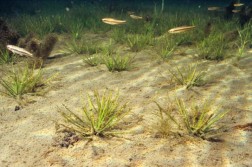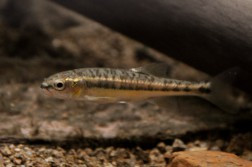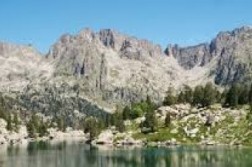LimnoPirineus is a LIFE + Nature project aimed at improving the conservation status of species and aquatic habitats of European interest in the high mountains of the Pyrenees.
The project is financed jointly by the EU LIFE + program that promotes conservation actions and recovery of habitats and species of flora and fauna in protected areas of the European Union, integrated into the Natura 2000 network.
Habitat and species
Among the habitats of interest, there are certain types of peat bogs, tufa-forming springs, rivers and lakes. The target species include the floating water plantain (Luronium natans), some amphibians like the common brown frog (Rana temporaria), the common midwife toad (Alytes obstetricans) and the Pyrenean brook salamander (Calotriton asper), besides the Pyrenean sculpin (Cottus hispaniolensis), which is an endemic fish from the Central Pyrenees. There are also some mammals that feed on the aquatic environment such as the Pyrenean desman (Galemys pyrenaicus), the European otter (Lutra lutra), and two species of bats, the lesser horseshoe bat (Rhinolophus hipposideros) and the alpine long-eared bat (Plecotus macrobullaris).
As part of this project, conservation actions will be taken in the National Park Aigüestortes i Estany de Sant Maurici, the Natural Park of Alt Pirineus, and the Estanho of Vilac located in the Val d’Aran.
Conservation actions
- Restoring the natural state of some lakes through the elimination and control of alien fish species allowing the recovery of native species.
- Restocking the common brown frog, the common midwife toad and the Pyrenean brook salamander by the translocation of individuals in some restored lakes.
- Improving the Pyrenean sculpin populations through the translocation of individuals.
- Restoring the natural flow in certain peat bogs affected by hydrological changes.
- Restoring the degraded peat bogs by replanting species typical of these environments (Sphagnummosses and clumps ofCarex).
- Improving the quality of peat bogs under heavy pressure from tourism by building elevated platforms.
- Improving the condition of tufa-forming springs, natural eutrophic lakes and the aquatic water plantain (Luronium natans) building watering troughs to reduce livestock attendance.
- Developing conservation plans and assessment protocols for the management of species and natural habitats of European Community interest.
Aquatic continental systems are scarce environments that occupy only 2% of the Earth surface but, at a global scale, are highly threatened. These are environments with a very specific and sensitive fauna and flora where threatened species are abundant.
In the Pyrenees, these wetland ecosystems are generally considered very natural landscapes. Despite their remote location, anthropogenic perturbations have not been absent.
Main threats
- The introduction and spread of alien species, especially various species of fish (salmonids and cyprinids), abundantly introduced in high mountain lakes and streams originally fishless.
- Changes caused by the hydroelectric water level fluctuations.
- The excessive presence of both livestock and people around springs or peat bogs crossed by tourist paths.
- The high degree of isolation of some species populations that are now in danger of extinction decimated by various anthropic actions, such as the floating water plantain ( natans) and the Pyrenean sculpin (C. hispaniolensis).





